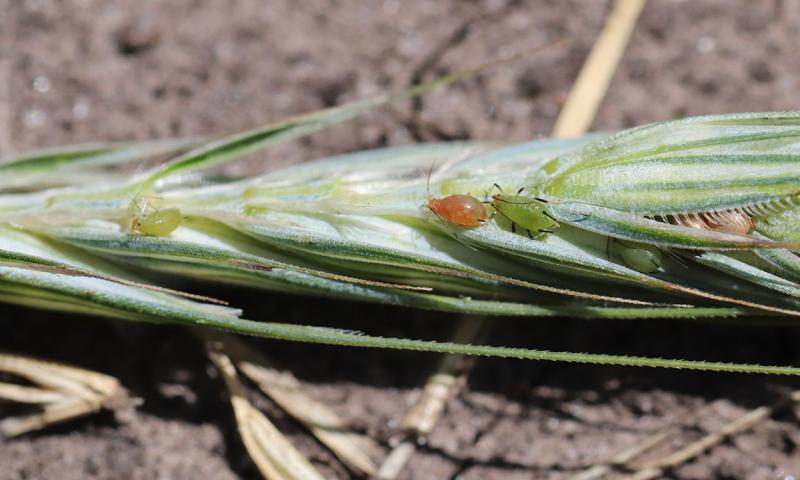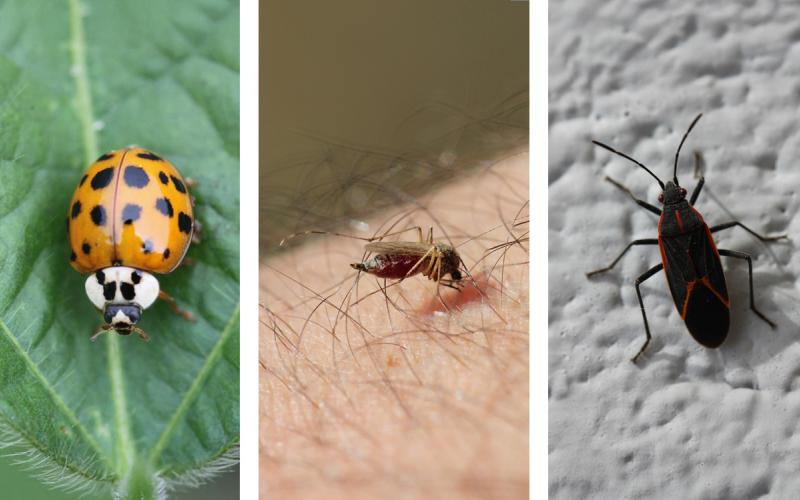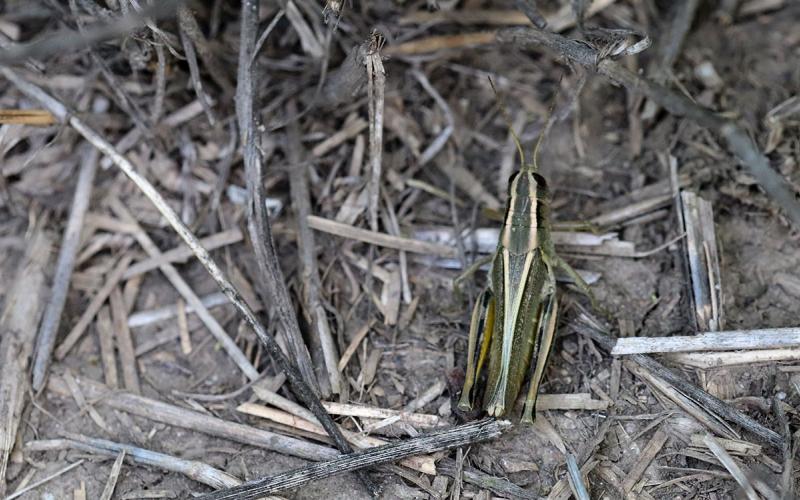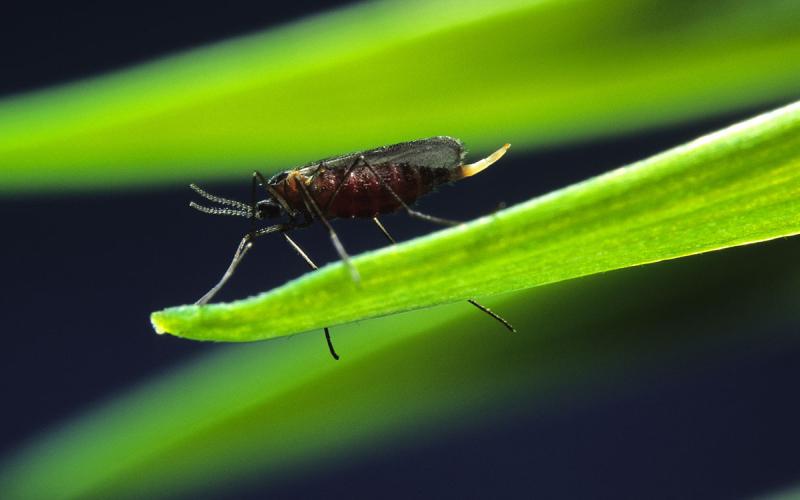Originally Submitted: July 1, 2021
Reports of aphid populations in wheat fields have been slowly increasing in the past week. Most of these populations are well below the economic threshold, but there is a potential for them to increase. In addition, some wheat has shown signs of greenbug feeding, which is relatively uncommon in South Dakota. Initial greenbug feeding is accompanied by small, yellow-orange spots with dark necrotic lesions in the center of infested leaves. If feeding continues, leaves may turn yellow to reddish-brown and will eventually die. So far, the most commonly observed aphids are the English grain aphid and bird cherry-oat aphids. Greenbugs do not overwinter in South Dakota and migrate from the Southern United States each spring.
Identification

English grain aphids can vary in color from light or dark-green to brown. They have characteristic black antennae, cornicles and segments on their legs (Figure 1). While scouting wheat, it is also possible to observe swollen or discolored aphids, which are a result of parasitation. When a parasitized aphid dies, it often appears bloated and tan, white or black depending on the species of wasp that parasitized it (Figure 1).
Scouting and Management
The easiest way to scout for aphids in wheat is to start at one side of the field and walk in a “W” of “Z” pattern. While walking the pattern, randomly choose twenty plants from each leg of the pattern and examine the plants for aphids. English grain aphids can be present on the leaves, stems or on the heads. Table 1 contains the economic thresholds for English grain aphids. If populations exceed the thresholds, please refer the most-current edition of the South Dakota Pest management Guide: Wheat. When deciding if the aphid populations need to be managed, determine if natural enemies (lady beetles, lacewings, etc.) are present. If you are not at threshold and numerous natural enemies are present, the aphids may not reach the threshold.
|
stage |
heading stage |
stage |
stage |
dough stage |
|
|---|---|---|---|---|---|
| English grain aphid |
|
|
|
|
|


